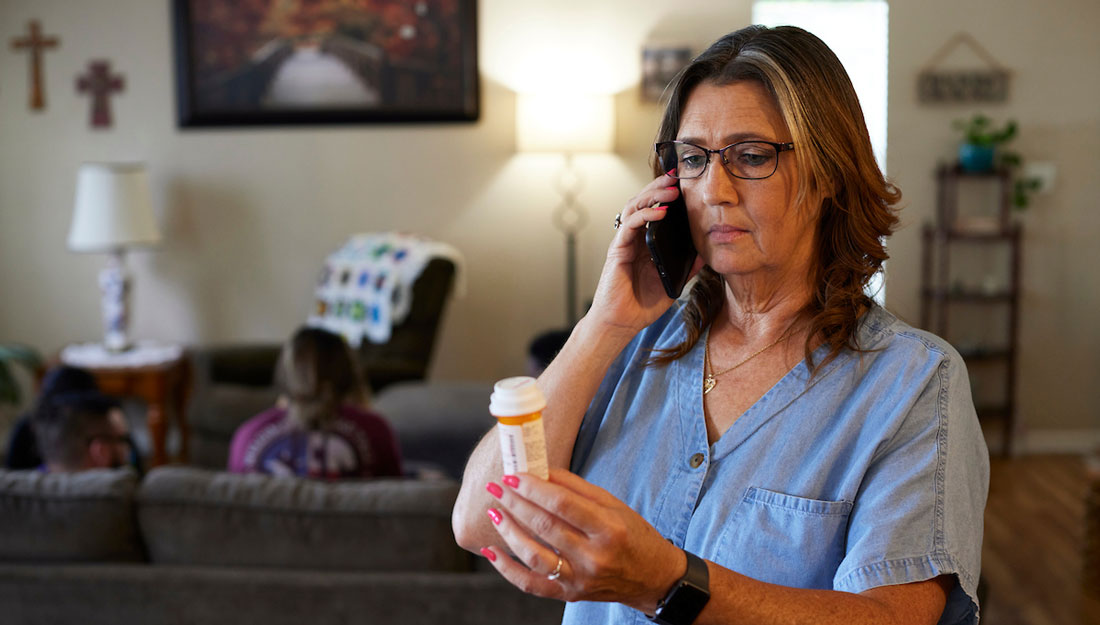- Mary Leigh Meyer
- Healthy Living, Medicine, Public Health, Show on VR homepage, Trending
Tips to help prevent cervical cancer
Get the HPV vaccine, regular screenings, practice safe sex and don’t smoke

Woman in a hospital gown sitting on a bed in a physician's office
Each year, nearly 12,000 women are diagnosed with cervical cancer.
Cervical dysplasia occurs when cells on the cervix—the mouth of the uterus—begin to change. Often mild cervical dysplasia goes away on its own, but more severe cases may require treatment. It often has no symptoms, and can begin when the human papilloma virus (HPV) infects the cervical cells.
“This is where the value of Pap smear testing, or HPV testing, becomes clear. Both of these screening tests allow for early detection of abnormal cells before they progress to cancer,” said Hector Chapa, MD, FACOG, clinical assistant professor of obstetrics and gynecology at Texas A&M College of Medicine. “Early identification of these dysplastic cells allows for treatment preventing their progression.”
HPV, a virus transmitted through skin-to-skin sexual contact, is a key factor in cervical cancer. HPV is found in 99 percent of cervical cancers, and has over 100 strains. Some strains can cause genital warts and others can lead to cancer of the cervix, anus and even throat. However, most people who acquire HPV in the genital area will get better on their own within the first two years. Factors like the patient’s immune system, smoking habits and even number of sexual partners contribute to the formation of cancer as a result of the virus.
The steps to prevent HPV and, in turn, cervical cancer are simple.
Get the HPV vaccine
In the United States, HPV is the most common sexually transmitted infection. About 80 percent of HPV-related cancers are attributable to HPV 16 or 18, which are included in the HPV vaccine available in the United States. In 2017, the HPV vaccine was recommended for males and females aged nine to 26.
“Recently, the U.S. Food and Drug Administration (FDA) expanded the recommended age for the HPV vaccine to women and men aged 27 to 45,” said Alicia Hong, PhD, associate professor at the Texas A&M School of Public Health, co-director of the program on global health research. “In other words, all people aged 9 and 45 should get the HPV vaccine.”
The Federal Advisory Committee on Immunization Practices (ACIP) recommends that all children get vaccinated at age 11 or 12, which entails two shots six to 12 months apart. If they receive their first two shots within five months from each other, then a third dose of the vaccine is required.
Teens and young adults aged 15 to 26 and immunocompromised individuals require three doses of the vaccine. The vaccine is especially recommended for men aged 22 to 26 if they have not been previously vaccinated or engage in sexual activity with other men.
Get regular Pap smears
Pap smears are a part of a routine pelvic exam by a health care provider, who will examine the cervix and scrape cells from its surface to be tested at the lab with a cytology screening.
In August 2018, the U.S. Preventive Services Task Force updated the guidelines for cervical cancer screening in average-risk women.
“These recommendations apply to women with a cervix who do not have any signs or symptoms of cervical cancer, regardless of their sexual history or HPV vaccination status,” Hong said. “These recommendations do not apply to women who are at high risk of the disease.”
The recommendations are:
- For women younger than 21, no Pap smear is needed. Instead, they should get the HPV vaccine.
- Women aged 21 to 29 should get a Pap smear every three years.
- Women 30 to 65 have three options of screening. Patients do not need all three methods at the same time, so they can pick one method of screening:
- Pap smear every three years, or
- HPV 16 and 18 testing alone every five years or
- Co-testing of HPV and Pap smear every five years.
- For women older than 65 years old who have had prior screenings, no testing is needed.
“For women aged 30 to 65 years, the American College of ObGyn’s Practice Advisory on Cervical Cancer Screening says patients need to discuss all three screening strategies with their physician, so they can select what works best for them,” Chapa said.
Chapa and Hong encourage those at higher risk of cervical cancer, such as those with a personal history of cervical cancer or precancer, a previous diagnosis of a high-grade precancerous cervical lesion or a compromised immune system, to talk to their health care providers about their own screening schedule.
Practice safe sex
Using protection, like condoms, can significantly curb a person’s exposure to HPV and reduce the risk of cervical cancer. HPV can infect people during single instance of sexual intercourse that happened without proper protection.
Don’t smoke
Smoking is associated with an increased risk for cervical cancer. Experts are not definitively sure why, but some believe the carcinogens ingested from smoking tobacco may impair the body’s ability to fight HPV infections.
Quitting tobacco will not entirely remove health damage from smoking, but each day without tobacco is found to help alleviate the risks of many cancers. One of every three cancer deaths in the United States would not occur if no one smoked, according to the Centers for Disease Control and Prevention.
Media contact: media@tamu.edu


